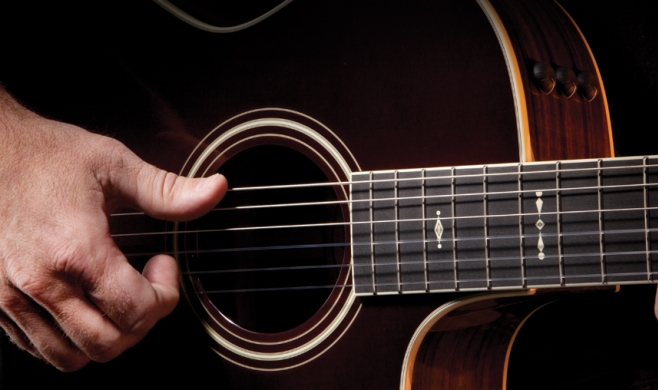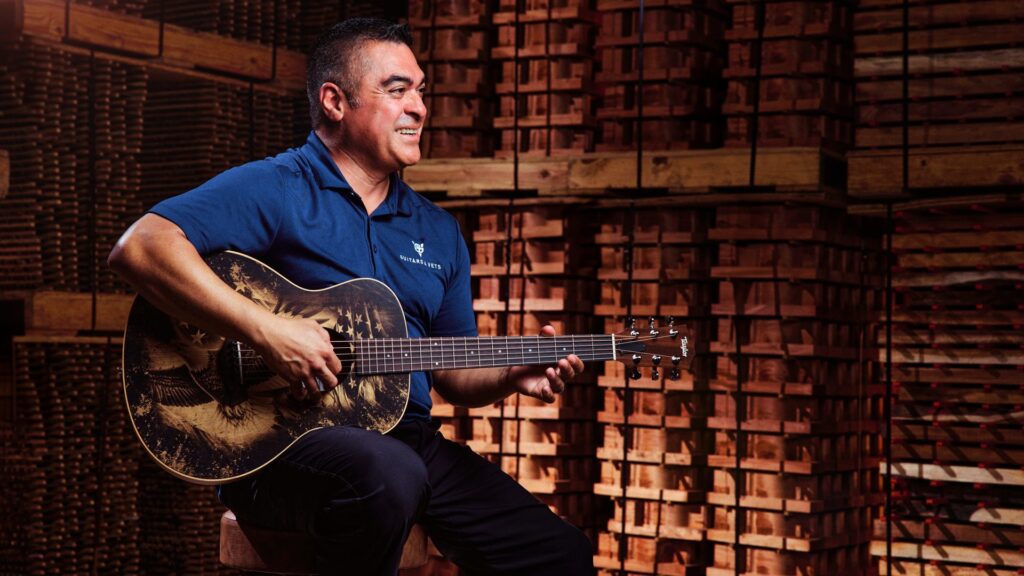Since 2009 I have had the privilege of teaching music at the prestigious Center for Creative Youth in Middletown, Connecticut. CCY is a five-week pre-college residential program on the campus of Wesleyan University, now in its 36th year, which emphasizes interdisciplinary arts education, multicultural exchange, critical thinking, and leadership skills. As the instructor for the Rock Ensemble, I teach my students technical musical and performance skills (we study the entire rock & roll canon, starting pre-Chuck Berry and finishing with student compositions), music theory, historical context of the music, and interpersonal skills. CCY is one of the highlights of my year, and I thought I would share a bit of the experience, concentrating on the first week, as it serves as a microcosm of the entire program.
In addition to the Rock Ensemble, CCY’s music department also includes Jazz Ensemble, a String Section, Woodwinds, Chorus and Piano. Students arrive at class on the second day (the first day is orientation), and we have a friendly departmental meet-and-greet. The emotions and personalities of the students range from exuberance to painful shyness, and we instructors do our best to ensure that everyone feels welcome and comfortable. But we also express our desires to encourage their growth as artists and explain that we need their help and own personal commitment to get them to the next level of their musical ability. This is not always as easy as you might think.
“Do I have to practice a lot?” one student inevitably asks. “I don’t insist that you practice,” I respond, “but you won’t get any better, and your fellow classmates will leave you behind. The choice is yours.” This always draws an “ooh, you got burned” reaction from the rest of the students, and that quickly puts to rest the practice requirements for the program. After a bit more of this playful interaction regarding what to expect (and what is expected), we break into our individual group classes, first for music theory and 45 minutes later for ensemble rehearsal.
Students come in with a wide range of theory knowledge: anywhere between none and a first year university level (we often get students from high schools that offer high-level music theory classes). As a result, there are three levels of music theory taught at CCY. I design my theory class (usually intermediate) to be as fun as possible, and everything I teach is instantly put into practice on the students’ instruments. It’s a pleasantly noisy theory class. Because theory classes are organized by different levels, not by instrumental ensemble, I end up with a few rock guitarists sitting between a clarinetist, piano player, singer or percussionist. As a result, musical sensibilities are shared in unique ways not normally found in general school music programs. The sound of the guitarist’s distorted, bluesy A minor pentatonic scale fills the room alongside the flutist’s angelic circle of fifths arpeggios, and then they swap ideas and you suddenly have a musical concept one might hear on a Jethro Tull record or maybe a John Cage piece.
After theory we make our way to the rehearsal room, where we crank up and go. At this point it is very important to be prepared for the worst. Assembling six to 12 teenage kids, all strangers to each other, in a room to play rock & roll and getting them all to agree on one or two songs can be quite challenging. Luckily, after years of teaching I have learned that there are a few rock & roll equalizers: Hendrix, Led Zeppelin and Nirvana. Believe it or not, the Beatles and Rolling Stones are not as easily agreed upon; in fact, the responses are quite polarizing. Whether it is the ubiquitous nature of the Beatles’ music or the obstinate longevity of the Stones live performances (with all due respect, Mick and Keith could be some of my students’ great-granddads), the music of these artists is held back for another week.
Once the songs are agreed upon, rehearsal begins. As in theory class, the technical ability of my ensemble students also spans a wide range. While all my students must have some proficiency on their respective instruments, some are clearly better than others. As a result, I can choose to allow very accomplished players to perform challenging instrumental parts or suggest they try something new. In this context, the punch line to the old joke, “How do you get a guitar player to turn down? Put sheet music in front of him,” can be amended to, “Ask him/her to sing.” But they do. Everyone sings. By the end of week four, everyone in my class has sung, and even the most reluctant vocalists usually come to me before I need to insist, asking, “Do you think I could try the background vocals on this one?”
In the past I have had students manage to learn, rehearse, refine and finally perform for their peers (in no more than four days) as many as four songs a week! And the material has been as diverse as any free-form college rock station. The Cure’s “Just Like Heaven” segued into the Herbie Hancock funk/fusion classic, “Chameleon”; James Brown’s “I Feel Good” followed by a punk rock tune by the Minutemen; and my all-time favorite: the Temptations’ “Papa Was A Rolling Stone” sung in four-part harmony, complete with keyboard-sampled strings, a student pianist doubling on trumpet, and a “metal” kid gleefully pounding away on wah-wah guitar. One of my fellow teachers later noted the poignancy of the tune being performed by a few kids who have lived the life sung in that song, as CCY has a large population of students coming from underserved inner city communities with a disproportionate number of single-parent homes.
In an environment of such creativity, support and friendly competition, these student musicians thrive! While significant technical ability on an instrument requires much more than five weeks, growth as an artist is easily measured at CCY by the students’ personal musical compositions, new understanding and appreciation of different styles, and plans for future exploration and personal development (students can earn school credits by initiating a leadership project in their own school once CCY has ended).
As I write these final words I realize I have barely scratched the surface in explaining what an amazing learning and personal growth environment CCY is. After the morning “core curriculum” classes, students can study, among others things, painting, ballroom dancing, West African drumming, and even Balinese gamelan! I could go on for hours about the development I’ve seen in students in just five weeks at CCY, but even more personally, I could ramble on about my own personal maturation as a teacher, musician and human being. As an artist who spent a large portion of his career, until just a few years ago, cultivating an attitude of aloofness, cynicism and cocksure confidence, I can see how one could easily read those last words as phony and insincere, but when I sat down to put my feelings about CCY into words, those are the most honest, simple and gratefully sentimental words I can find. I highly recommend that you visit their website [link to: www.crec.org/magnetschools/schools/ccy/] and suggest the program to any current high school students with whom you have contact. (CCY applications are available to high school students in all states and countries, from rising sophomores through rising seniors, 14 years of age minimum). To describe CCY as “life changing” would be an understatement.
One final note: I would like to thank Taylor Guitars for publishing this piece as it has no direct correlation with the company. But Taylor’s continued support of music education is a hallmark of their commitment to the arts beyond the mere scope of a name brand.
Shawn Persinger, a.k.a. Prester John, is a self-proclaimed “modern/primitive” guitarist and music instructor who owns Taylor 410s and 310s. Shawn is a regular contributor to Wood&Steel and Lessons & Tips on the Taylor website. His latest sister CDs are Rise O’ Fainthearted Girls and Desire for a Straight Line (one instrumental, one vocal), recorded with mandolinist David Miller. www.PersingerMusic.com































































